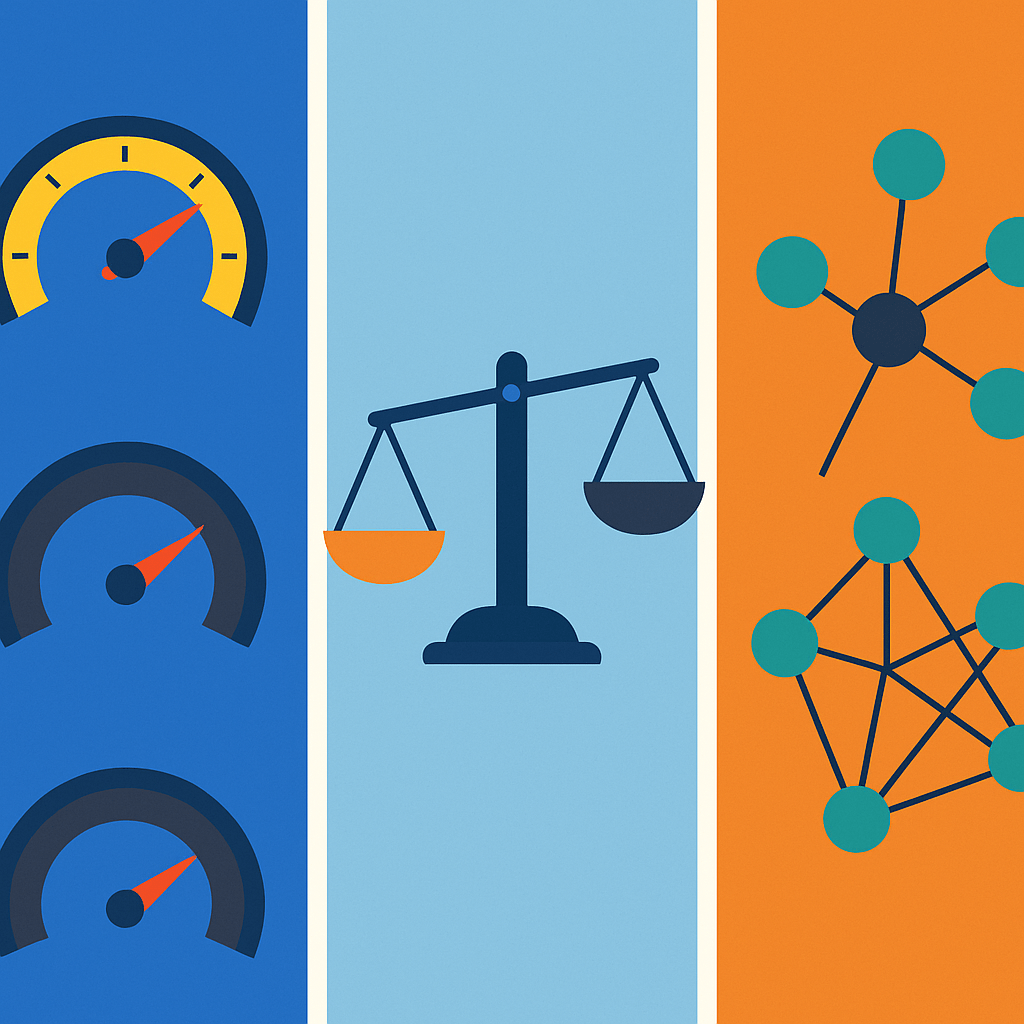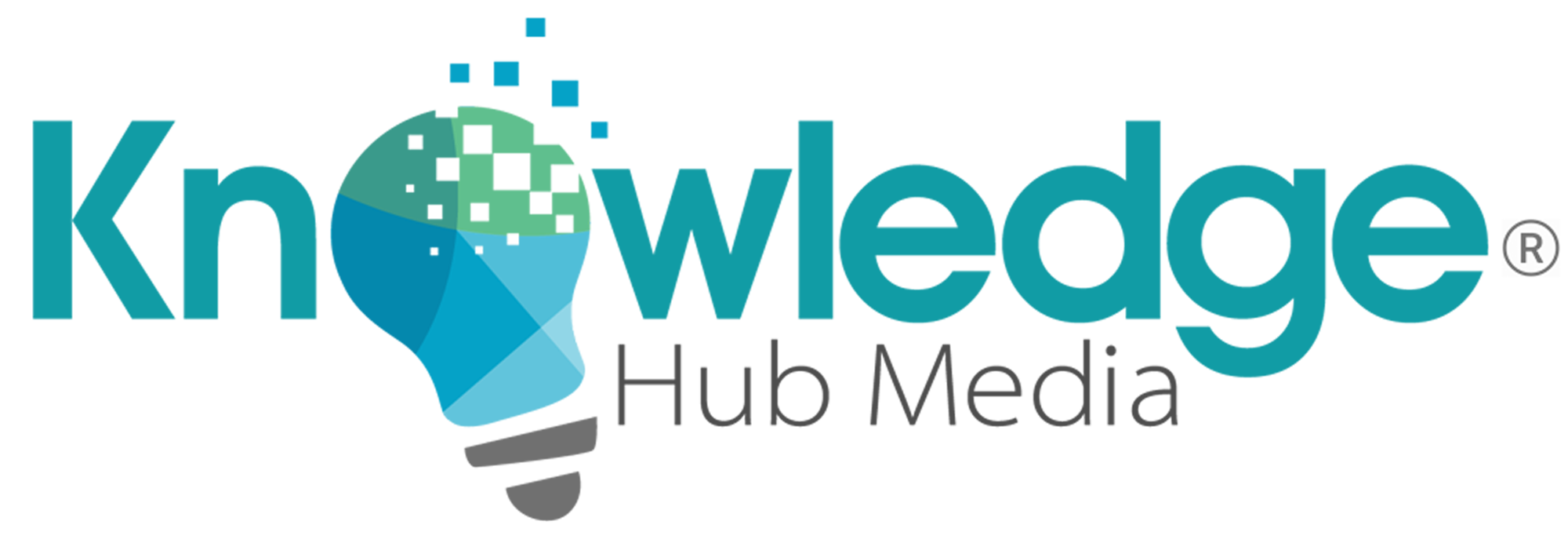In today’s world data isn’t just growing, it’s forming a maze of relationships, dependencies, and interactions that would make even the best maze-runner dizzy. Traditional databases squint at these connections, while graph databases see patterns, reveal hidden insights, and drive crucial business outcomes. But as any seasoned technology leader knows, harnessing the true power of graph data often brings an infamous sidekick: complexity.
That doesn’t have to be the case anymore though. Neo4j AuraDB, the fully managed graph database service, expertly abstracts away infrastructure headaches, delivers effortless scalability, and empowers enterprises to tap real-time analytics with confidence and ease. In this article, you’ll discover how AuraDB redefines modern graph data management. We’ll decode the foundational concepts of graph databases, reveal the elegant architecture behind AuraDB, show you how it overcomes everyday pain points (no aspirin required), and benchmark it against top alternatives to prove why it’s the ultimate solution for connected enterprises.
Ready for an eye-opening journey through the next generation of business-ready graph technology? Let’s dive in!
Table of Contents
- Understanding Graph Databases: The Foundation of Connected Data
- Introducing Neo4j AuraDB: A Fully Managed Graph Database Service
- Business Benefits of Neo4j AuraDB for Modern Enterprises
- Addressing Pain Points: How AuraDB Overcomes Graph Database Challenges
- Comparing Neo4j AuraDB with Leading Graph Database Competitors
- How to Choose the Right Graph Database Solution for Your Business
- Conclusion
- References
Understanding Graph Databases: The Foundation of Connected Data
The dawn of big data brought a tidal wave of new challenges, but perhaps none greater than understanding the myriad relationships binding modern information. Enter the graph database: a specialized technology capable of storing, mapping, and querying intricate networks of data far beyond the reach of classical tabular systems.

Unlike relational databases—where data sits in neat, but often rigid rows and tables—graph databases use nodes to represent entities and edges to gracefully capture the relationships between them. This native modeling approach unlocks the potential to handle complexity as naturally as your favorite coffee shop handles latte orders during a Monday morning rush.[1]
For decision-makers and data architects, graph databases offer agility and insight that relational systems can’t match. From social network mapping to fraud detection and logistics optimization, these platforms illuminate the connections at the very heart of modern business.[2]
If you’re eager to explore how graph databases are transforming today’s enterprises, check out Graph Databases for Connected Data for more information.
Key Components: Nodes, Edges, and Properties
At their core, graph databases consist of just a few elegantly simple building blocks. Nodes represent entities—such as customers, products, transactions, supply chain stops, or even web pages. Edges (sometimes called relationships) connect nodes, illustrating how entities are interrelated (these might capture relationships like “friends with,” “located at,” or “supplies to”). And properties are key-value pairs attached to nodes and edges, providing context (e.g. a node might have a name and creation date, or an edge might record transaction value).
This trio allows graph databases to represent complex business realities far more intuitively than the tangled joins and lookups of relational tables. Imagine mapping your entire organization—people, projects, tasks, departments—with just a few types of nodes and relationships. That’s the magic of native graph modeling, as detailed in Neo4j’s own documentation and product literature.[1]
Common Use Cases and Industry Applications
From international banks tracing financial transfers, to online retailers fine-tuning recommendations, use cases for graph databases are as varied as business itself…
- Social Networks: Map relationships such as friendships, follows, or likes.
- Supply Chain Management: Track product lineage, suppliers, shipments, and potential choke points.
- Fraud Detection: Spot suspicious transaction rings by revealing hidden connections between accounts.
- Recommendation Engines: Uncover product or media relationships to personalize user experiences.
Consider this. In a study documenting the application of Neo4j within multimodal transport networks, researchers were able to integrate complex regional datasets to optimize real-time route planning, enhancing both efficiency and customer satisfaction.[3] For more, the Graph Database Case Study on Multimodal Transport provides an in-depth example.
Introducing Neo4j AuraDB: A Fully Managed Graph Database Service
If graph databases are the sports cars of the modern data world—fast, agile, and powerful—then managing them can sometimes feel like maintaining a high-performance engine on a mountain road, in a storm, with the check engine light on. That is, until you switch to Neo4j AuraDB.
AuraDB is a fully managed, cloud-native graph database as a service, designed to make running powerful graph applications effortless for businesses of any scale.[4] By abstracting infrastructure management—think backups, patching, upgrades, and monitoring—AuraDB lets enterprises focus on driving business value, not tinkering under the hood.
Let’s not bury the headline, AuraDB promises a 99.95% uptime service-level agreement (SLA), automated upgrades, ironclad maintenance, and a service designed for global high availability and performance.[4] As Sudhir Hasbe, Chief Product Officer at Neo4j puts it, “with the business critical tier, enterprises access advanced scalability, enterprise-grade security, and horizontal scaling through features like Read-Only Secondaries. The Aura Console further simplifies management, offering a GenAI copilot and unified interface that streamlines query optimization and developer onboarding for rapid production deployments.”[5]
Architecture and Core Capabilities of AuraDB
How does AuraDB work its magic? It all begins with a fundamentally advanced architecture, tailor-made for modern enterprise needs…

Multi-Zone Availability: Your data is safe and globally available, with redundancy built right in for disaster recovery peace of mind.
Native Graph Modeling: Supports property graphs natively, so even the most Byzantine data relationships are easy to capture and traverse.
Flexible Schema: Adapt on the fly—AuraDB’s schema-optional model allows you to evolve your data model as your business changes (and trust us, it will).
Real-Time Analytics: Lightning-fast query speeds ensure that business insights aren’t just buried in logs—they’re right in front of you when you need them.
Limitless Scalability: The business critical tier now supports up to 512GB of RAM, enabling you to scale horizontally through Read-Only Secondaries without performance trade-offs.[5]
These core features are documented thoroughly in Neo4j’s technical whitepapers and product releases, with benchmarked claims validated by independent analysts and industry insiders.[4][5]
Managing Complexity: How AuraDB Simplifies Graph Data Operations
Let’s be candid, effective graph database management is notoriously challenging. Between intricate data models, performance tuning, and constant need for uptime, even the most battle-hardened DBAs might find themselves jolted awake by late-night alerts. AuraDB laughs in the face of such stress—well, as much as software can laugh.
With AuraDB, complexity melts away thanks to a couple of key features. First comes automated infrastructure management. Backups, patches, upgrades, and health checks are fully automated, with zero manual overhead.[4] Then there’s the unified console (Aura Console), which introduces a GenAI copilot that guides users through model creation, query tuning, and troubleshooting with ease.[5] And last (but far from least) is the enhanced onboarding experience. Developer-friendly tools, rich online documentation, and seamless cloud integration bring down the learning curve, so teams get productive right out of the box.
Neo4j’s engineering team continues to refine these capabilities, as reflected in product blog updates and testimonials from developers who have transitioned from legacy or self-managed environments.[5]
Business Benefits of Neo4j AuraDB for Modern Enterprises
AuraDB’s technical prowess would be incomplete without measurable business outcomes. For fast-moving enterprises, the real goal is not “standing up a graph database”—it’s unlocking real-time, data-driven results on time and on budget. That’s where AuraDB truly shines.
Real-time analytics provide sub-second query execution. Teams can move from data to insight with unprecedented speed, ensuring that opportunities don’t get lost in the shuffle.[4] Moreover, AuraDB scales alongside business growth, supporting data sizes and workloads that would leave traditional systems gasping for breath.[5] And by eliminating infrastructure management headaches, IT teams can reclaim their mornings (and perhaps their weekends), reallocating resources to innovation rather than maintenance.
The business benefits are summarized succinctly in Neo4j’s official blog, supported by case studies documenting improved time to market, cost reductions, and even increased revenue streams associated with advanced relationship-driven analytics.[4][6]
Scalability and Performance Advantages
When it comes to graph databases, performance is not a “nice-to-have”—it can make or break your critical applications. AuraDB is meticulously engineered to address the classic problem of graph scalability, where performance risks “falling off a cliff” as data volumes or relationship counts surge.
By leveraging Read-Only Secondaries and robust distributed architecture, AuraDB can handle massive, interconnected datasets with minimal latency, allowing for effective horizontal scaling.[5] Multi-zone deployment ensures high availability—essential for use cases like fraud detection or network analysis where service interruptions and downtime are strictly forbidden. And as far as real-world benchmarks are concerned, independent industry analysts repeatedly cite Neo4j AuraDB for performance leadership, often outpacing well-known competitors in both throughput and query response times.[4][7]
Comparative studies show that while alternative platforms such as AWS Neptune focus on enterprise data scale, and ArangoDB touts multi-model flexibility, AuraDB balances scale with operational simplicity for dynamic business environments.[8]
Ease of Use and Operational Efficiency

Remember when deploying a new database meant a month of provisioning, setup, and a touch of existential dread? With AuraDB, those are relics of the past. It’s a fully managed service, so automatic backups, effortless patching, intelligent scaling, and proactive health monitoring are all built-in.[4] Frictionless deployment means you’ll be able to spin up a production-grade environment in minutes, not weeks. And both administrators and developers alike applaud Aura Console—a streamlined, intuitive management console which integrates monitoring, scaling, and automation through a single pane of glass.
According to official Neo4j documentation, and corroborated by numerous third-party reviews, AuraDB’s deployment experience often outpaces even the most seasoned DBA’s expectations.[4][6] In other words, less time spent firefighting means more time spent innovating.
Enterprise-Grade Security and Reliability
In the realm of business data, “oops” is not (or at least shouldn’t be) part of the vocabulary. That’s why AuraDB’s enterprise-readiness extends deep into security and reliability. They offer granular security controls (role-based access and robust authentication guard your data at every tier).[4] They meet strict compliance and regulatory requirements, with a “business critical” tier specifically designed for global enterprises navigating complex compliance landscapes.[5] And importantly, AuraDB’s Guaranteed 99.95% uptime, redundant storage, and automated failover keep your mission-critical applications—and your reputation—safe.[4]
Statements from Neo4j senior product managers emphasize the rigor behind these reliability guarantees, backed by comprehensive SLA documentation and real-world enterprise deployments.[4][5]
Addressing Pain Points: How AuraDB Overcomes Graph Database Challenges
Ask any data leader or developer, managing graph databases gracefully is a bit like juggling chainsaws. Between performance tuning, intricate relationship mapping, and scalability worries, the pain points are real—unless you’re using AuraDB.
Let’s break down how it tackles the most pressing challenges. First, an intuitive GenAI copilot and a user-friendly console flatten the learning curve, so your team can go from newbie to graph ninja in record time.[5] With horizontal scaling and massive memory capacity, AuraDB makes growth easy—unlike traditional systems that buckle when you add one relationship too many.[5][9] Automated management eliminates common headaches like patching, sizing, and health checks.[4][6] And lightning-fast queries, even during “Black Friday traffic” moments, ensure that no opportunities are missed.
These claims are corroborated by industry thought leaders, developer communities, and expert articles such as those found on GraphDB.dev and Medium (where practitioners share hands-on advice and troubleshooting insights).[10][11]
Simplifying Graph Data Modeling and Query Optimization
With AuraDB, data modeling feels less like rocket science, and more like building with premium blocks—intuitive, flexible, and fast to iterate. The built-in GenAI copilot and interactive console teach, suggest models, and help optimize queries, allowing teams to visualize business logic and see immediate feedback.
Neo4j’s engineering leadership regularly updates the ecosystem with enhancements driven by developer input, and their whitepapers provide actionable guides for making graph data modeling and query optimization accessible for all skill levels.
Mitigating Scalability and Performance Bottlenecks
 Scalability is a core tenant of AuraDB; it’s as if the platform did its cardio. Leveraging architecture researched in both academia and industry, including insights published in IEEE and other technical outlets, AuraDB is built to handle ballooning datasets and unpredictable workloads without breaking a sweat.[9]
Scalability is a core tenant of AuraDB; it’s as if the platform did its cardio. Leveraging architecture researched in both academia and industry, including insights published in IEEE and other technical outlets, AuraDB is built to handle ballooning datasets and unpredictable workloads without breaking a sweat.[9]
Features like Read-Only Secondaries support distributed query workloads, while finely-tuned caching and indexing mechanisms maintain real-time performance.[5] Technical whitepapers and independent reviews highlight how AuraDB outperforms many alternatives in benchmark scalability and responsiveness.[4]
Reducing Operational Overhead Through Managed Services
Every minute spent on maintenance, patching, and troubleshooting is a minute lost from what really matters. Managed services like AuraDB flip the script by offering zero maintenance headaches, as backups, updates, scaling, and monitoring happen quietly in the background. There are also no surprise hardware costs or overtime bills—just transparent, usage-based pricing. And as far as business agility is concerned, AuraDB allows you to instantly respond to new data projects and changing market demands.
Third-party evaluations and enterprise testimonials consistently highlight the seismic shift in team productivity and morale after migrating to AuraDB, emphasizing the tangible reduction in total cost of ownership and operational burden.[6]
Comparing Neo4j AuraDB with Leading Graph Database Competitors
A technology decision is only as strong as the alternatives you’ve honestly considered. Here’s how AuraDB stacks up against market contenders like Amazon Neptune, TigerGraph, ArangoDB, Memgraph, and Nebula Graph.
Amazon Neptune vs. Neo4j AuraDB
While Amazon Neptune is widely adopted for its integration with AWS environments, AuraDB often takes the lead with its more intuitive managed experience, flexible deployment options, and independently benchmarked performance down the line.
Expert reviewers and industry analysts cite AuraDB for superior usability, real-time query responsiveness, and a richer feature set for advanced graph analytics—qualities corroborated in both Gartner evaluations and competitive benchmarks.[7][8]
TigerGraph and ArangoDB: Analysis and Differentiators
TigerGraph is lauded for its distributed analytics focus and high-throughput, while ArangoDB’s multi-model support is a draw for projects requiring broader database paradigms. However, both are generally acknowledged for steeper learning curves and, in many cases, a more hands-on management burden compared to AuraDB’s cloud-native, set-it-and-forget-it model.[8]
Comparisons outlined in industry reports and the PuppyGraph guide suggest that businesses prioritize developer productivity, time to value, and operational simplicity—domains where AuraDB consistently outperforms.[8]
Open-Source Alternatives and Their Enterprise Suitability
Memgraph and Nebula Graph stand out among open-source platforms touting Cypher compatibility and distributed architecture, respectively. However, as competitor analysis reveals, they often fall short in three enterprise-critical areas:
- Managed Service Quality: DIY setup means more to maintain.
- Scalability: Some open-source offerings report impressive numbers, but lack independent benchmarking in true enterprise settings.
- Business-Ready Support: Customers value not just features, but SLAs, compliance, and 24/7 support—all standard in AuraDB’s business critical tier.[5]
As a result, while open-source solutions attract developer experimentation, technology decision-makers consistently choose AuraDB for peace of mind, operational ease, and enterprise alignment.
How to Choose the Right Graph Database Solution for Your Business
Selecting a graph database isn’t about ticking boxes—it’s about aligning technology with your organization’s loftiest goals, present realities, and evolving needs. Here’s a practical evaluation framework based on analyst criteria, Neo4j’s own product management guidance, and industry best practices…
Key Features to Evaluate

Native Graph Support & Modeling: Does the solution natively support nodes, edges, and properties with schema flexibility?
Performance at Scale: Are proven scalability benchmarks, multi-zone availability, and sub-second queries documented?
Cloud-Native and Managed Services: Is infrastructure management automated, with rapid provisioning and minimal manual intervention?
Security & Compliance: Does the platform meet your regulatory requirements, with features like encrypted storage, robust authentication, and failover?
Integration Ecosystem: Will the solution play well with your current toolchain and future cloud strategy?
The official Neo4j offerings comparison blog by Pramod Borkar provides a detailed breakdown of these criteria, guiding organizations in mapping features to use cases.[6]
Aligning with Business Needs and Technical Requirements
No two organizations are alike, but successful graph database adoption always matches solution capabilities to business reality. Leaders should ask does the solution scale as our data and company grow? Can our devs adopt and build on it quickly? Are security, compliance, and uptime in line with business-critical needs? And does it deliver real-time insights fast enough for decision-makers?
Real-world case studies found in official Neo4j resources and technical publications demonstrate how aligning technology to these questions accelerates time-to-value while minimizing risk.[4][6]
Conclusion
Modern enterprises can no longer afford to treat relationships in their data as afterthoughts. Neo4j AuraDB steps forward as the ultimate managed graph database solution, expertly merging unrivaled scalability, operational elegance, robust real-time analytics, and ironclad security—all wrapped in an enterprise-ready managed package.
Whether you’re seeking to reduce operational overhead, defang the complexity of graph data modeling, or ensure that your analytics never lag behind business needs, AuraDB stands alone as the best-in-class answer, trusted by leading organizations, and validated by industry experts.
References
- Neo4j, Inc. (N.D.). Neo4j AuraDB: Fully Managed Graph Database. Retrieved from https://neo4j.com/product/auradb/
- NSTXL. (N.D.). Graph Databases are Fundamental for Connected Data. Retrieved from https://nstxl.org/graph-databases-are-fundamental-for-connected-data/
- Scitepress. (2015). Graph Database Application using Neo4j. Retrieved from https://www.scitepress.org/papers/2015/54690/54690.pdf
- Neo4j, Inc. (N.D.). Neo4j AuraDB: Fully Managed Graph Database – Product documentation, metrics, and features. Retrieved from https://neo4j.com/product/auradb/
- Hasbe, Sudhir. (2024). Neo4j Expands Cloud Database Capabilities to Power Enterprise-Scale Graph Deployments. Neo4j Official Blog. Retrieved from https://neo4j.com/blog/news/auradb-enhancements/
- Borkar, Pramod. (2023). Choose the Right Neo4j Offering for Your Needs. Neo4j Official Blog. Retrieved from https://neo4j.com/blog/news/neo4j-offering/
- Gartner, Inc. (2025). Top Neo4j Graph Database Competitors & Alternatives. Retrieved from https://www.gartner.com/reviews/market/cloud-database-management-systems/vendor/neo4j/product/neo4j-graphdatabase/alternatives
- PuppyGraph Blog. (2025). Top 5 Neo4j Alternatives of 2025. Retrieved from https://www.puppygraph.com/blog/neo4j-alternatives
- IEEE Xplore. (2023). Large-Scale Graph Database Scalability Research. Retrieved from https://ieeexplore.ieee.org/document/10391694/
- GraphDB.dev. (2023). Graph Database Challenges and How to Overcome Them. Retrieved from https://graphdb.dev/article/Graph_Database_Challenges_and_How_to_Overcome_Them.html
- Medium. (2023). The Challenges of Working with a Graph Database. Retrieved from https://medium.com/vaticle/the-challenges-of-working-with-a-graph-database-2a5f9a7c903b

